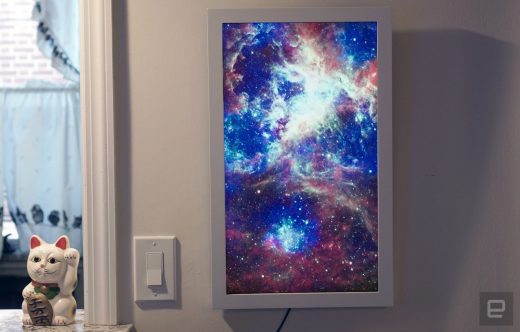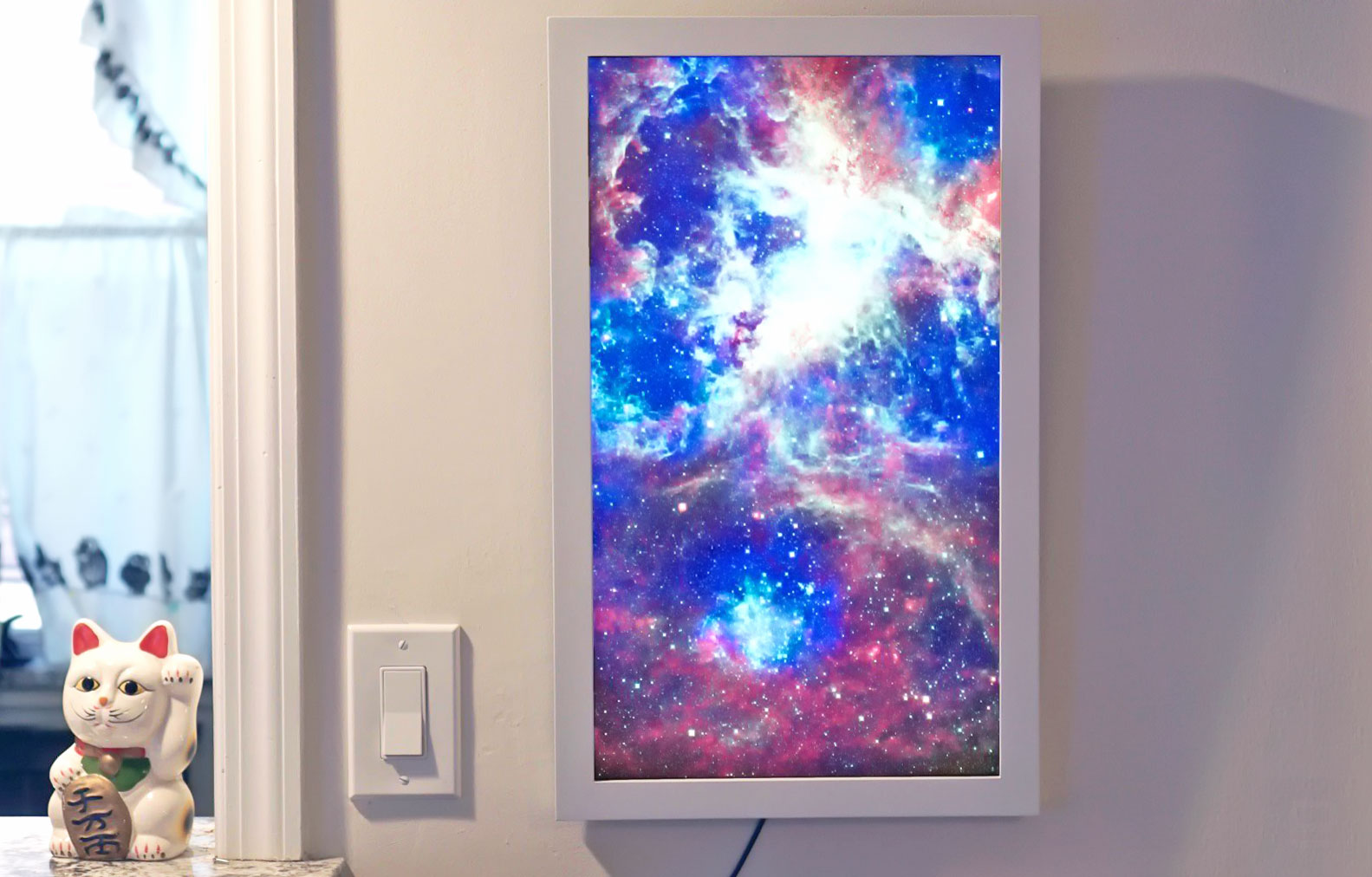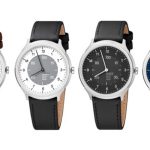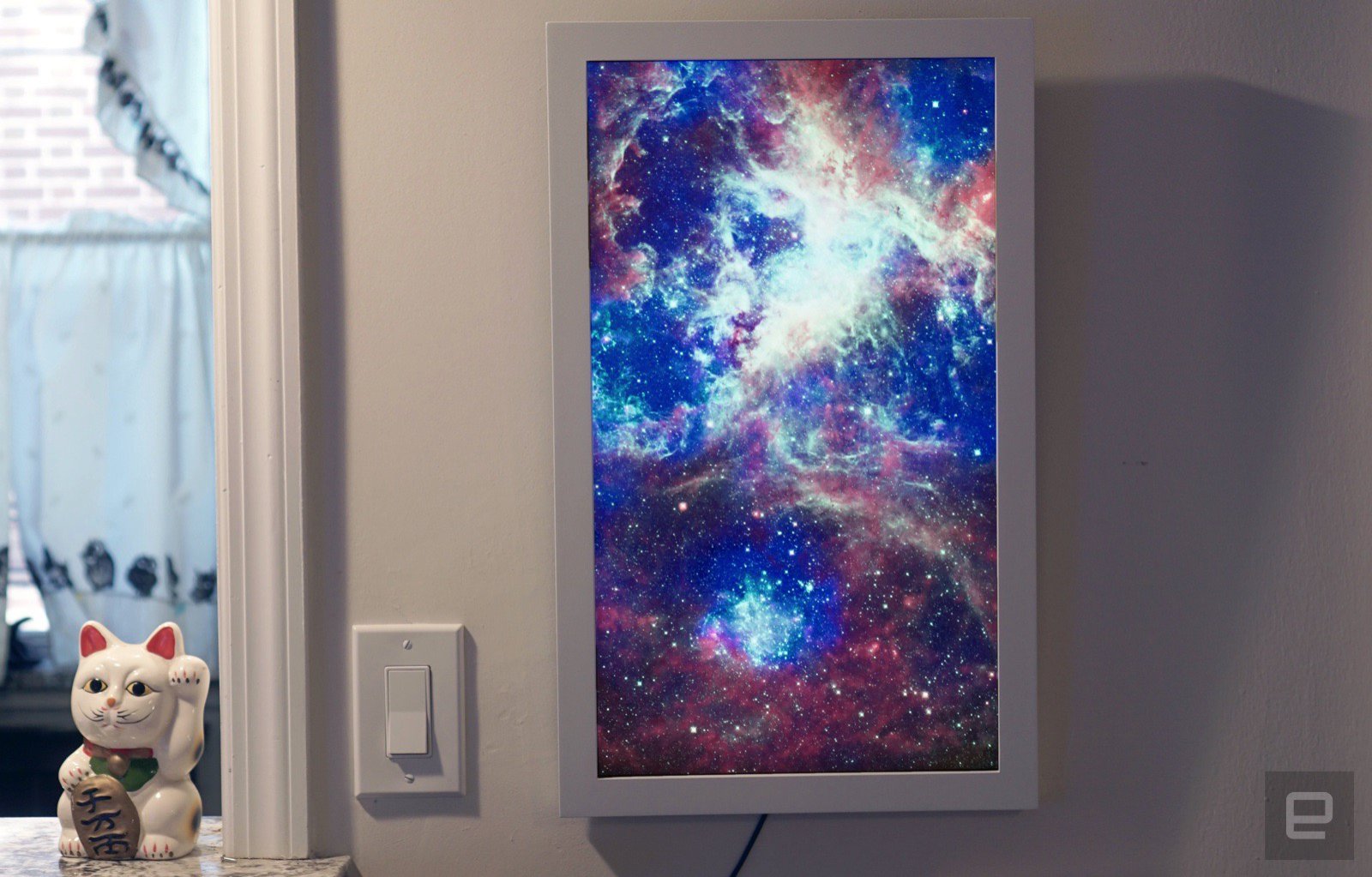How I learned to love Electric Objects’ digital art display
“The last thing I need is another screen in my apartment.” That was my first thought when I heard about Electric Objects, a company that makes digital art displays. Between my 55-inch OLED TV, 34-inch ultra-widescreen PC monitor, MacBook Air, multiple tablets and iPhone 6S, what use would I have for more screens? But after spending some time with the $299 EO2, the company’s latest product, and its accompanying $10-a-month “Art Club” subscription, it wasn’t long before I saw the appeal of a cloud-connected display on my wall.
You could call me an aspirational art owner. I’d love to fill my apartment’s walls with unique pieces, but the process of finding and framing things is just too tedious. (Heck, I have a closet full of posters that still need to be properly mounted and framed.) The EO2 promised to bring a bit of culture to my home without much fuss. How could I say no to that?
The EO2 is basically just a 23-inch 1080p display with an internet connection. Its screen has a matte finish, which helps it avoid reflecting light sources and keeps it from looking like a glossy TV screen hanging on your wall. While its aluminum black case looks pretty basic, you can also snap on a $99 hardwood frame (available in maple, walnut, white wood and black wood) to make it match your decor.
You have a variety of options for setting it up: Simply lean it against something (there are two rubber feet in the box to prevent it from slipping) or hang it up on your wall with the included wall mount. Because my wife and I live in a Brooklyn apartment and want to preserve our walls, we chose to hang it with a single nail, like a typical picture frame, instead of using the two nails required for Electric Objects’ mount. The power cord that juts out of the bottom of the EO2 wasn’t much of a problem for us, but there are plenty of cable-hiding products on the market if that’s the sort of thing that bugs you.

Once the display is mounted, you just need to download the company’s app and step through the setup process to get it online. I initially ran into some trouble getting it connected, but that turned out to be a separate issue with my T-Mobile-issued ASUS router — I’ve moved over to a Netgear Nitehawk and it’s been smooth sailing ever since.
Next, it was time to get my art on. From the EO app, you can sift through the free content available from the Electric Objects community. There’s some good stuff there, but if you really want to get fancy, you can shell out for the $10 monthly “Art Club” subscription, which gives you full access to a plethora of classic and modern pieces from museums and well-known artists. Pushing a static image to the EO2 takes anywhere from two to five seconds on my 802.11AC 5GHz wireless network, while video pieces could take several minutes, depending on the size of the piece.
It wasn’t long before my wife and I really got into the EO2. We built a cat-themed playlist as a quick mood booster, and the new “Space Is the Place” gallery, featuring work by the digital artist Adam Ferriss, ended up being a meditative way to evoke the immensity of the cosmos. The possibilities feel endless. Want to show off fine pieces of art? Go ahead! Want a playlist full of memes and pop-culture references? You’re covered there, too. You can even throw in your own photos and movie clips, which is perfect for when family comes over.
Just about everything I threw on the EO2 looked good, no matter if it relied on big, bold colors or fine lines and detail. Of course, it’s not something you’ll be staring at for hours on end, like a TV or computer monitor; it just needs to make a good impression whenever you glance at it. Given the EO2’s price, I wasn’t expecting a world-class display, so I was surprised there wasn’t even much to complain about. Settings-wise, there’s not much to tweak. You can choose various levels of “auto brightness” support, which changes the screen’s brightness throughout the day, as well as set up a sleep timer. There aren’t any intricate image settings to deal with. (Colors looked decently calibrated to my untrained eyes.)
The EO2 isn’t exactly a revolutionary product. It didn’t completely change my life like my first smartphone, but it’s a nice way to quickly change up the mood in your home. After setting up several Philips Hue light bulbs in my living room, I was surprised by how much slight lighting changes could influence the way I felt. Sending art to the EO2 had a similar effect; it’s hard not to feel contemplative when you run into a classic painting in your living room.
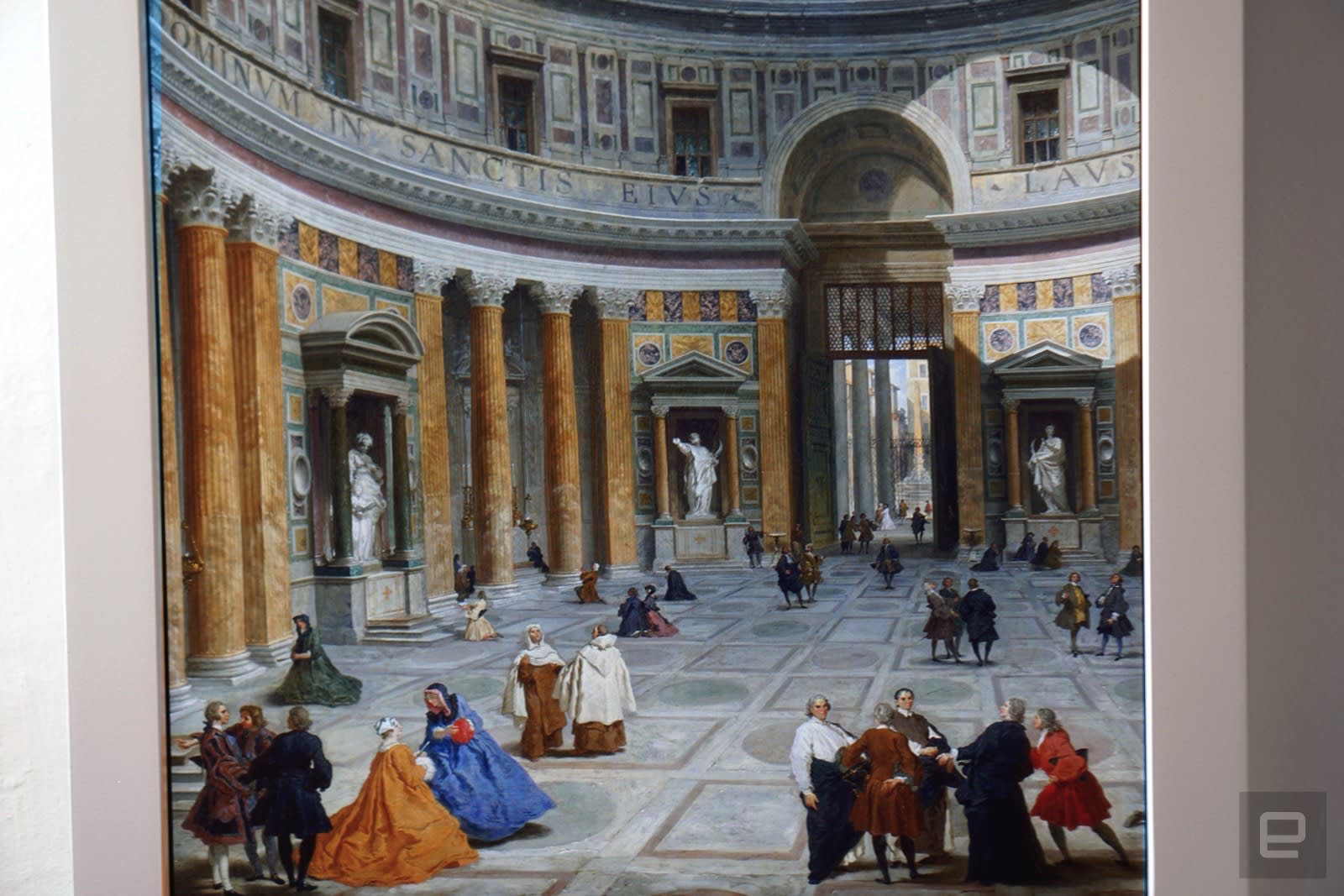
It’s also hard to compare the display to an actual framed print. There’s something about a physical piece of art, even if it’s a cheap reprint, that feels different than something projected on a screen. Choosing to frame a work of art and mount it on your wall has a feeling of permanence and commitment that a mere connected display, which can be changed in seconds, can’t replicate.
The key to appreciating the EO2? Don’t expect it to replace your framed art. Instead, think of it as a quick way to aesthetically remix a space. It’s also expensive at $299, and to truly enjoy it you have to subscribe to a service that costs as much as a Netflix subscription. If both of those prices end up dropping (hardware typically does, after all), Electric Objects might actually succeed at bringing fine art to the masses.
(87)

